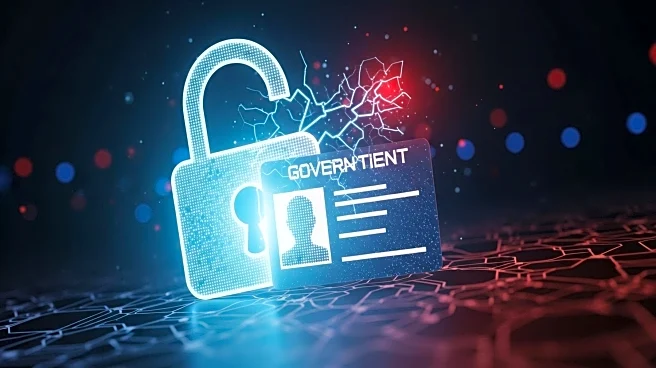What is the story about?
What's Happening?
A recent report by TransUnion has revealed a significant increase in digital fraud costs affecting U.S. businesses. The report indicates that digital fraud has drained an average of 9.8% of annual revenue from companies in the U.S., marking a 46% increase from the previous year. This translates to approximately $114 billion in total losses among the 200 American executives surveyed. Account takeover has emerged as the most damaging type of business fraud in the U.S., followed by synthetic identity fraud and scams or authorized fraud, which is the leading form of business fraud globally. The volume of account takeovers rose by 21% between the first halves of 2024 and 2025, and has increased by 141% since 2021. Steve Yin, TransUnion's Global Head of Fraud, emphasized the need for organizations to rethink identity verification and secure customer interactions as fraudsters exploit digital touchpoints from account creation to transactions.
Why It's Important?
The surge in digital fraud costs poses a significant threat to U.S. businesses, impacting their financial stability and operational integrity. With losses reaching billions of dollars, companies are under pressure to enhance their cybersecurity measures and identity verification processes. The rise in account takeovers and synthetic identity fraud highlights vulnerabilities in current systems, necessitating a strategic overhaul to protect sensitive data and customer interactions. This trend could lead to increased investment in cybersecurity technologies and a shift in business practices to prioritize digital security. As fraudsters continue to exploit digital platforms, businesses that fail to adapt may face severe financial repercussions and damage to their reputations.
What's Next?
Organizations are likely to intensify their focus on cybersecurity and identity verification to mitigate the risks associated with digital fraud. This may involve adopting advanced technologies such as artificial intelligence and machine learning to detect and prevent fraudulent activities. Additionally, businesses might collaborate with cybersecurity firms to develop robust security frameworks and conduct regular audits to ensure compliance with industry standards. As the threat landscape evolves, companies will need to stay informed about emerging fraud tactics and continuously update their security protocols to safeguard their operations and customer data.
Beyond the Headlines
The increase in digital fraud costs also raises ethical and legal concerns regarding data privacy and protection. As businesses implement more stringent security measures, they must balance the need for robust protection with the rights of consumers to privacy and data security. This could lead to discussions around regulatory frameworks and the role of government in enforcing cybersecurity standards. Furthermore, the growing prevalence of digital fraud may influence cultural perceptions of online security, prompting individuals and organizations to become more vigilant and proactive in safeguarding their digital identities.
AI Generated Content
Do you find this article useful?













